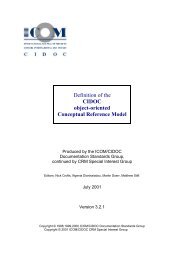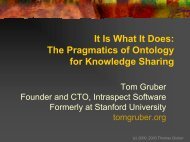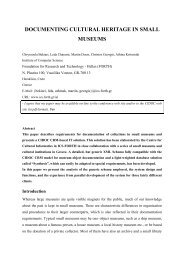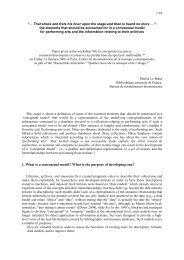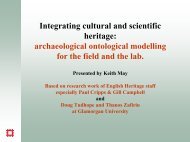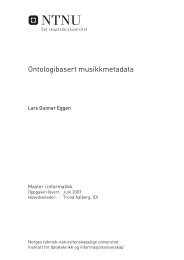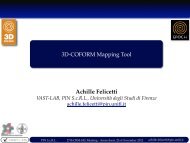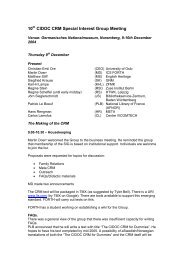pdf file - The CIDOC CRM
pdf file - The CIDOC CRM
pdf file - The CIDOC CRM
Create successful ePaper yourself
Turn your PDF publications into a flip-book with our unique Google optimized e-Paper software.
interconnections, e.g. book - print - print-stock - stock creation - author, may have to be avoided if they apply<br />
only to a few cases.<br />
2.4 Compatibility<br />
We have assessed the possibility of reducing the an OO model to a Relational equivalent. This does not appear to<br />
present any major conceptual difficulties though we have not attempted to define the formal rules which should<br />
be applied.<br />
2.5 Terminology<br />
Much of the terminology used by computer scientists is not standardised hence difficult to understand - even for<br />
computer scientists! This aggravates the problem of communicating with non specialists. <strong>The</strong> term ‘Data model’<br />
is a case in point. Computer scientists generally use this term to refer to different modelling schemas: the OO<br />
data model, or the relational data model. This is contrary to current <strong>CIDOC</strong> usage which employs the term as a<br />
contraction of ‘the model of the data’.<br />
In view of the general acceptance, within <strong>CIDOC</strong>, of this latter use of ‘data model’ it seems clear that we should<br />
continue to use this term as at present, adding a note for computer scientists to the effect that the term is not used<br />
as they might expect.<br />
2.6 Role of the meta-model<br />
<strong>The</strong> <strong>CIDOC</strong> OO reference model contains a semantic meta-model. An important role of this model is to define<br />
semantic extension rules. Typically, this specifies structural constraints on the sorts of links and subclasses<br />
which can be created: the notion of ‘style’, for example, could be restricted to man-made objects. <strong>The</strong> meta<br />
model also provides a means for 'talking about the model'. Classes and attributes are grouped together into<br />
intuitive categories: e.g. spatial properties, temporal properties, etc.<br />
NB systems based on the formal language TELOS, as the SIS, product of FORTH, allow the physical<br />
implementation of meta-models, but this is by no means essential for the reference model to be used.<br />
Word 2



